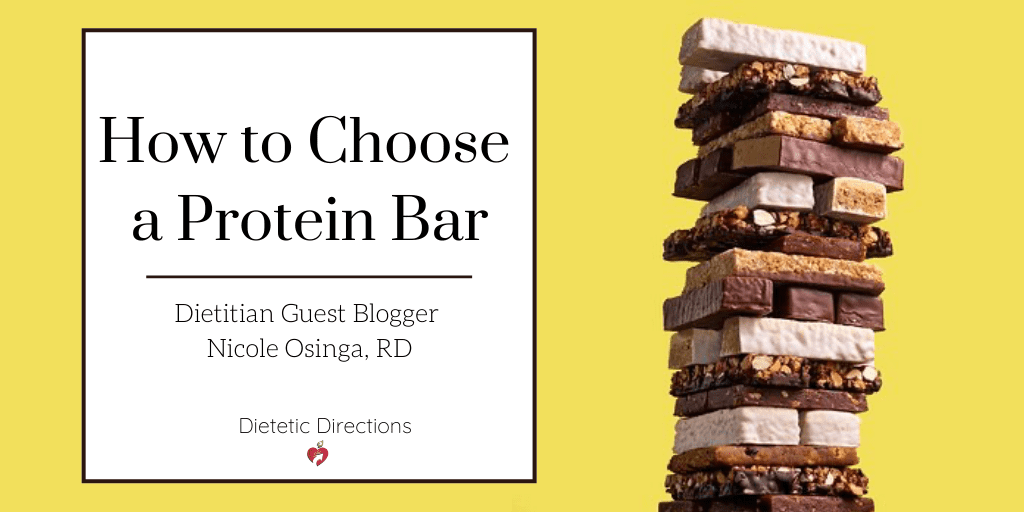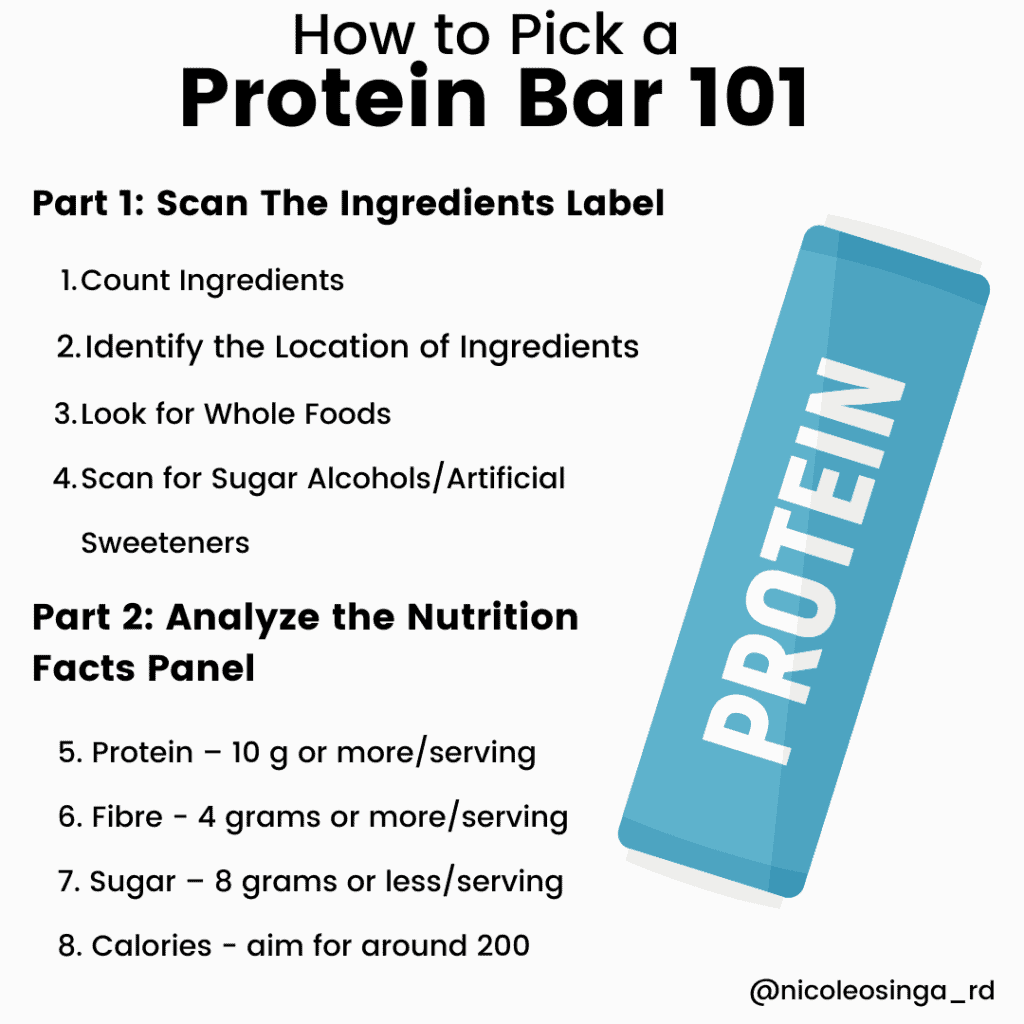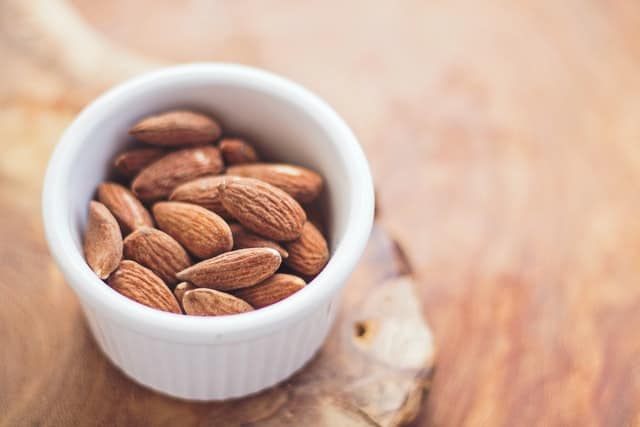
How to Choose a Protein Bar
Many clients ask us How to Choose a Protein Bar. After all, there are an overwhelming number of protein bar options on the market. But are there good, healthy options? Therefore, to help us break down what to look for, we have guest blogger, dietitian-extraordinaire, Nicole Osinga. Nicole has a nutrition consulting business in the Durham region and makes regular TV appearances. Be sure to follow Nicole on Instagram for meal planning inspiration! Take it away, Nicole!

Protein Bars = Chocolate Bars?
Let’s be honest. A number of these protein bars are not much different than chocolate bars, while a few really are great choices. Instead of calling out the chocolate bars in disguise, I want to give you the tools that you will need to make the best protein bar choice possible. When looking to choose the best protein bar, let’s start by analyzing the ingredients label, and then I will share what to look for on the Nutrition Facts panel.

Read on to learn some useful tips and tricks when choosing a protein bar!
Part 1: How to Choose a Protein Bar
Scan The Ingredients Label
1. Count Ingredients
Firstly, the fewer ingredients a protein bar has, the better. The length of the ingredients list usually indicates the level of processing it has gone through. The more processing, the longer the list of ingredients, and the more nutrients lost in the manufacturing process.

The fewer ingredients in your protein bar, the more nutritious it is.
2. Identify the Location of Ingredients
Another thing to keep in mind is that the order of ingredients reflects the quantity used in a product. Therefore, we want nutrient-dense items such as nuts, seeds and other protein-rich ingredients to be near the top of the ingredient list, and sugar towards the bottom.
Interested in learning more about the sugar in your food? Read our blog about recommended sugar intake!
3. Look for Whole Foods
While some bars are made of nothing but ultra-processed ingredients, others are made from just a few natural ingredients. Check the nutrition label on your bar and make sure the ingredient list contains mostly names you recognize. Above all, if sugar is listed first, beware!

4. Scan for Sugar Alcohols/Artificial Sweeteners
Low sugar isn’t always a good thing. To get a sweet-tasting bar without using sugar, many bar manufacturers use artificial sweeteners or sugar alcohols. Unfortunately, artificial sweeteners can bring on unwanted side effects including increased sweet cravings, along with headache, while sugar alcohols may result in gastrointestinal side effects such as bloating, diarrhea, and excess gas. Not so pleasant!

Artificial sweeteners can bring on unwanted side effects. Learn how to beat the bloat with the Low FODMAP Diet!
Part 2: How to Choose a Protein Bar
Analyze the Nutrition Facts Panel
To help you analyze a Nutrition Facts panel on Protein Bars, look to see if certain nutrients are above or below specific targets.

Want to become a more savvy label reader? Here’s a blog with top 3 label reading tips!
Protein – 10 g or more per serving
Protein is an essential macronutrient that not all of us get enough of. Therefore, protein is critical for building and maintaining lean muscle mass and helping you feel full for longer. The amount of protein needed in a bar depends on what you are using it for. You want to aim for more than 10 grams if this is a post-workout recovery snack. However, if you are using it as a between-meal snack, 10 grams should be adequate.
Looking for ways to upgrade your snacks? Check out our tips on how to snack like a dietitian!
Fibre – 4 grams or more per serving
Fibre is important for keeping your digestive system healthy, while keeping your cholesterol and waistline in check. A high fibre snack will prevent you from continuing to snack, as it keeps you feeling fuller for longer. Look for over 4 grams of fibre per serving.
Sugar – 8 grams or less per serving
Some protein bars contain as much sugar as a Snickers bar (20 grams)! Make sure your chosen protein bar has no more than eight grams of sugar per serving. This will prevent your blood sugar from increasing rapidly, and that will also prevent your body from producing lots of insulin. Insulin promotes fat storage and blocks fat burning, so keeping a lid on insulin is very important.

Click here to learn more about how to interpret sugar on nutrition labels.
Calories – Aim for around 200
If you’re snacking on a protein bar, aim for roughly 200 calories. Protein bars shouldn’t be a meal replacement, as a balanced meal full of nutrient-dense foods is optimal. In fact, a protein bar snack should provide half to one-third of the amount of calories you would eat in a meal.
Need support with Choosing a Protein Bar?
Dietitians can help!
Nicole’s Favourite Protein Bars
Do you think I could end this without revealing my favourite protein bars? Here they are!
- RX Bars
- Lara Protein Bars
- Hemp Yeah! Bars
- Real Food Bars
- Kinwa Bars

Bottom Line:
How to choose a protein bar doesn’t have to be complicated. Be sure to start with scanning the ingredients label. This will give you an indication of what is in your bar in the greatest quantity. Next, be sure to take a closer look at the Nutrition Facts panel of your protein bar. What’s the protein level? How’s the fibre? This will help us in knowing how long we can expect to feel full. Finally, be sure to check out that sugar number and the total calories of the bar as a serving size.

Now it’s your turn! What are your favourites when it comes to choosing a protein bar?




